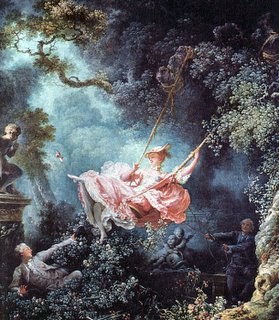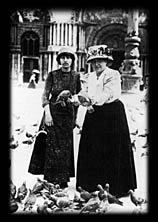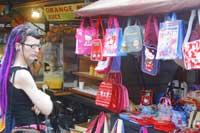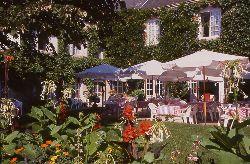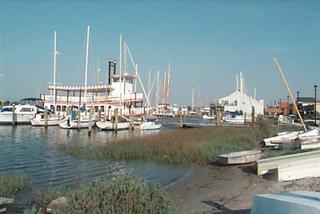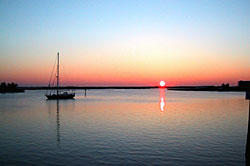
It is Fashion Week in London and I want to go shopping, but not for clothes. As the fashionistas check out
Top Shop on Oxford Street, I make my way to the food halls of London’s renowned department stores in
Harrods,
Harvey Nichols,
Fortnum & Mason and
Selfridges, to scratch a retail itch of a different kind. London has some of the best department store food halls in the world and I’m off to see how they rate as destinations for visitors.
In the battle of the food departments, for sheer magnificence, you can’t beat
Harrods. I hadn’t been there for years, not liking the owner or his creepy security guards but with that said, the food halls are fabulous, vast, and filled with the most wonderful tiling and decorations to match the food on offer. The range and selection of meat, fish, poultry, game, prepared foods, sauces, and condiments boggles the mind.
And so do the prices.
Harrods charges such a premium that it never fails to titillate the tourists. In every conceivable language they gasp and shriek, “Did you see the price of that fish!” or “$50 for jelly beans!” In fact, sticker shock has become such a part of the experience that most visitors end up meandering through, enjoying the old fashioned richness of it all and then end up purchasing a Harrods’ branded package of tea, jam or biscuits. I can’t recommend doing this when the “souvenir” food selection is so much better at
Fortnum and Mason. More on that later.
What did look inviting was the amazing number of in-store eating opportunities. Every possible kind of restaurant can be found in the Food Halls including an Oyster Bar, a Fish Bar that cooks what you choose from the counter, a Rotisserie, a Fromagerie featuring inventive dishes focussed on dairy products, a Pizzeria, a sandwich and ice cream bar and a good looking Tapas Bar in the basement that, because it was in the basement, was peaceful and quiet. The prices were no worse than what you would pay at other informal restaurants in Knightsbridge, about £15 to £20 and the atmosphere was lively and people seemed to be having lots of fun. A less expensive option on a good day is to buy the fixings for a picnic which you can eat in Hyde Park, only a few minutes walk away.
So what is the verdict on
Harrod’s Food Halls? I enjoyed my visit but bought nothing. I did see some interesting British producers, learned something about choosing olives and smoking guinea fowl. I had the opportunity to sample lots of delicious products and if you are shameless about it, you can almost eat lunch on what they give away. In short, a feast for the eyes, but keep your credit card firmly in your wallet.
From
Harrods to
Harvey Nichols is a five minute walk but at least 100 years apart in atmosphere. While
Harrods celebrates the abundance of the belle époque,
Harvey Nics ( as everyone ends up calling it sooner or later) is a showcase for fashionable 21st century food in sleek packaging and a hip and modern environment. This is food for people who live in lofts or would live in lofts if it weren’t for the kids.
I arrived at lunchtime and there were crowds eating at the in-store outlet of “
Yo Sushi”, a conveyor belt sushi chain which was novel and amusing a few years ago, but in actual fact, serves up pretty mediocre sushi. For a serious and lengthy lunch, the Fifth Floor Restaurant has always been a good if expensive option.
From the food shopping perspective, I saw nothing at
Harvey Nics that I couldn’t live without. There was a small but good selection of just about everything. The products were well presented and the store is bright, clean and attractive. If you like looking at chic shoppers, this is the place. I suppose if you were in buying shoes and a dress and needed things for dinner, it might be a good alternative or if you wanted modern packaging to match your modern kitchen but as a food shopping destination, it left me cold.
If
Harrods is 19th century and
Harvey Nics the 21st,
Fortnum & Mason will take you back 300 years to the time of the Georgians, when two grocers set up shop on the south side of Piccadilly in 1707. With its wonderful window displays, chandeliers, staff in livery, thick carpeting and royal warrants, it looks and feels like the England of our imagination, filled with British products acquired through the very British activities of hunting, shooting and fishing. Ironically, it is packed with people, none of whom look or sound English.
The staff is well trained and solicitous. They happily will give you a mini master class in tea (they have 67 varieties) or any other product that interests you. The shelves are groaning with amazing condiments, including their famous “gentlemen’s relish”. I even broke down and bought some fabulous looking bottarga (mullet roe from Sardinia) which is almost impossible to get even at the best Italian delicatessen. At £140 the kilo, it’s not surprising that there are few stockist. Happily, you only need a very small amount to make the best spaghetti you’ve ever eaten.
I also was impressed with the sandwiches on offer. These are no ordinary looking sandwiches using all kinds of exotic products and combinations ranging in price from £4.75 - £7.50. With Green Park right down the road, this is another good picnic option. As well, within the store are 3 restaurants featuring very British menus where tourists mix happily with well attired older ladies enjoying their Welsh rarebit or smoked salmon with scrambled eggs. I’ve eaten many satisfying and pleasant lunches at Fortnums. They also serve tea in the afternoon.
For the London visitor even remotely interested in food,
Fortnum & Mason is a classy destination. Certainly, the place is filled with tourists but there is more than enough staff and tills (cash registers) that they manage the numbers very effectively. This is the best place in town to buy food souvenirs to take back to your friends. The products are high quality and the packaging looks impressive.
In fact, my idea of a perfect half day in London, all within a 5 minute walk of each other, would include a tour and lunch at
Fortnums, an exhibition at the
Royal Academy across the road and a trip to
Hatchards, the oldest surviving bookshop in London, established in 1797 and frequented by the likes of Wellington, Kipling and Lord Byron. And if you still have not yet had your fill of food shopping, head for
Paxton & Whitfield on Jermyn Street, a 200 year old atmospheric cheese shop that Winston Churchill claimed was the only place a “gentleman buys his cheese”.
Finally, we come to
Selfridges, arguably the least famous and perhaps the best all around food hall in London. In contrast to the “recherchez du temps perdu” feel of
Harrods and
Fortnum & Mason, these food halls are white, gleaming and fabulous but unlike
Harvey Nics,
Selfridges has an unbelievably huge range of product. Every possible cuisine is well represented for both raw ingredients and prepared foods. If you want an excellent German Weisswurst, pigs trotters or sweetbreads, a complete Chinese or Indian or Middle Eastern meal, or some Spanish ham from pigs who only eat acorns, you will find all these things, and much more, at
Selfridges.
If you are a serious cook or just love to eat and look at food, you’ll have a fine time here. Just as Selfridges has transformed itself into the “it” department store, this attitude informs the food halls which make every attempt to be on top of the latest food trends which are marketed through demonstrations and tastings. Like all the other food halls, there were lots of places to eat including Oddono’s which claimed to serve real Italian gelato. I tested this claim on the Pistachio and it stood the test admirably. Finally, it can be said that visiting Selfridge’s Food Halls is made even better by the opportunity to visit the department store which offers one of the most exciting and up-to-the-moment shopping experiences in London. And, if you’ve had enough of the craziness of Oxford Street, take 5 minutes to head over to Hertford House on Manchester Square to see the serene and stately
Wallace Collection one of the finest collections of 18th and 19th century art ever assembled by a single family.
Having conducted a whirlwind survey of department stores and food, I can make the case that visiting food halls is one of the best ways to experience the London paradox, where the city is, simultaneously, living history and cutting edge modern. While
Harrods and
Fortnum & Mason give you the opportunity to revel in the way we used to buy provisions before the industrialisation and mass marketing of food,
Selfridges and
Harvey Nics demonstrate how far we have come in the preparation and presentation of the best things to eat from all over the world. In London Food Halls, you can find history, sociology, poetry and some lovely small gifts to take back to your friends. All of these places are spotless, fragrant and a very pleasant place to spend time. If you are on a budget, they even give you things to eat. Forget handbags and shoes, when in London, go for the food.
 Every year at this time, travel companies make hay selling packages to Austrian and German Christmas markets. There’s nothing wrong with the idea. Christmas markets look wonderful, sound lovely and smell great. They offer the chance to purchase charming gifts and decorations, but they are not “NoCrowds” experiences. Just the other day, my local paper ran the story of a mother who wanted to take her child to the large Christmas market in Stuttgart, Germany. As there were no rooms available anywhere near Stuttgart, she and the daughter slept on the night train, did the market and rode the night train back. In a word - uck!
Every year at this time, travel companies make hay selling packages to Austrian and German Christmas markets. There’s nothing wrong with the idea. Christmas markets look wonderful, sound lovely and smell great. They offer the chance to purchase charming gifts and decorations, but they are not “NoCrowds” experiences. Just the other day, my local paper ran the story of a mother who wanted to take her child to the large Christmas market in Stuttgart, Germany. As there were no rooms available anywhere near Stuttgart, she and the daughter slept on the night train, did the market and rode the night train back. In a word - uck!
